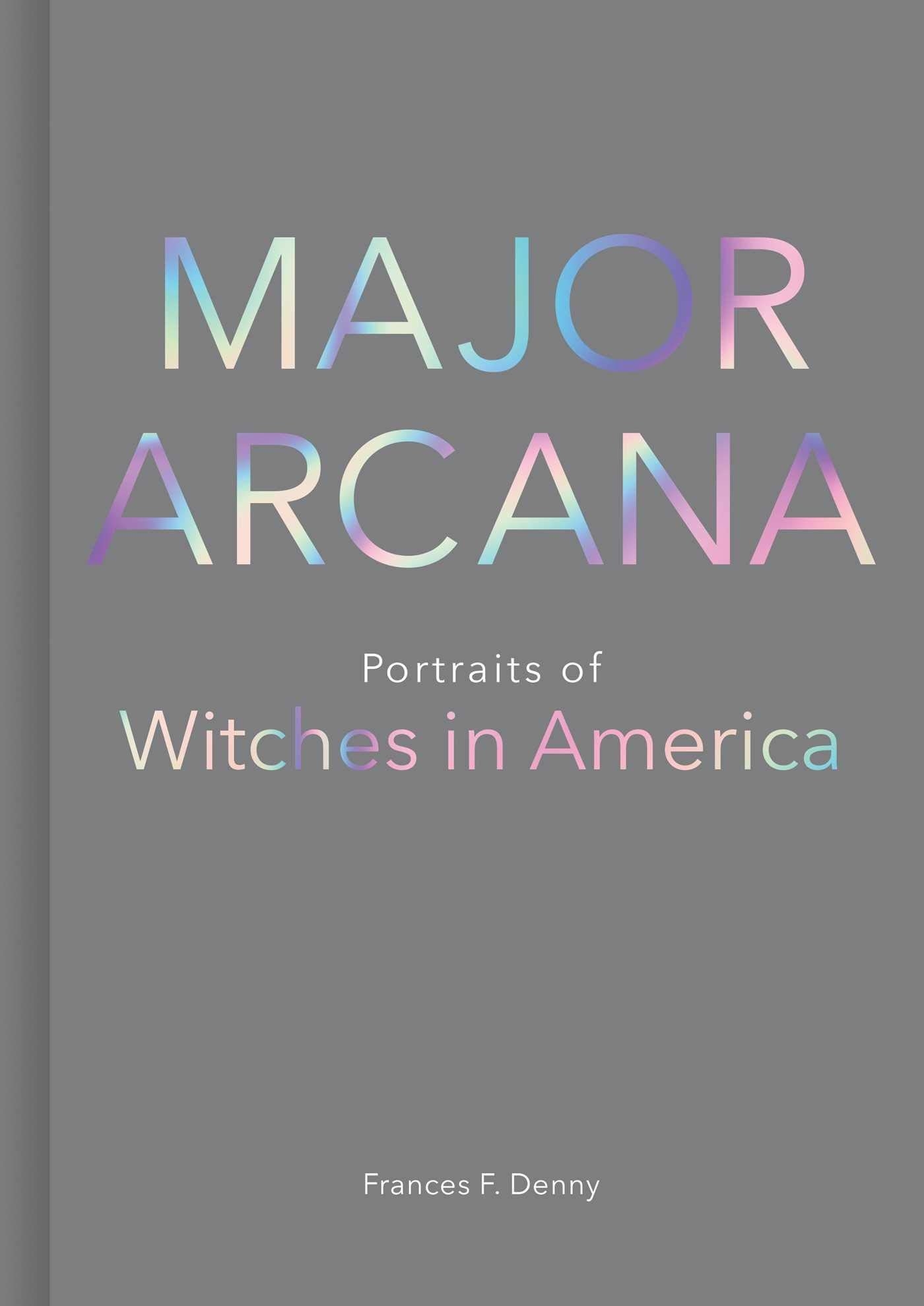In Major Arcana: Portraits of Witches in America, award-winning photographer Frances F. Denny presents a collection of portraits and insights gathered from three years spent meeting and photographing a diverse group of witches around the US. Below, 11 of those portraits.
Wolf (Brooklyn)
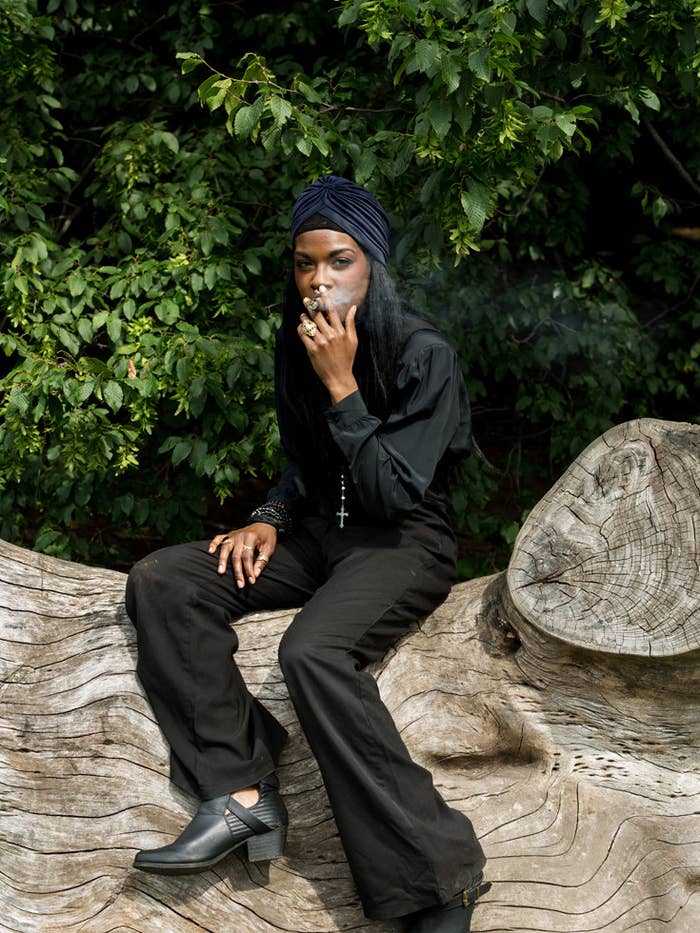
I’ve been in the Craft all my life — in various formulations of it. I’ve always felt different. Though I am a part of various underground scenes, tribes, and private gatherings, I am a floater and walk alone. I welcome knowledge, teachers, and conversation, but I remain in a gray area.
I believe there are secrets that are never meant to be shared outside a race, class, coven, or entity group. Everything is not for everyone. Knowing your own shit is the key. Wield it. —Djinn Wolf
Leonore Tija (Montpelier)
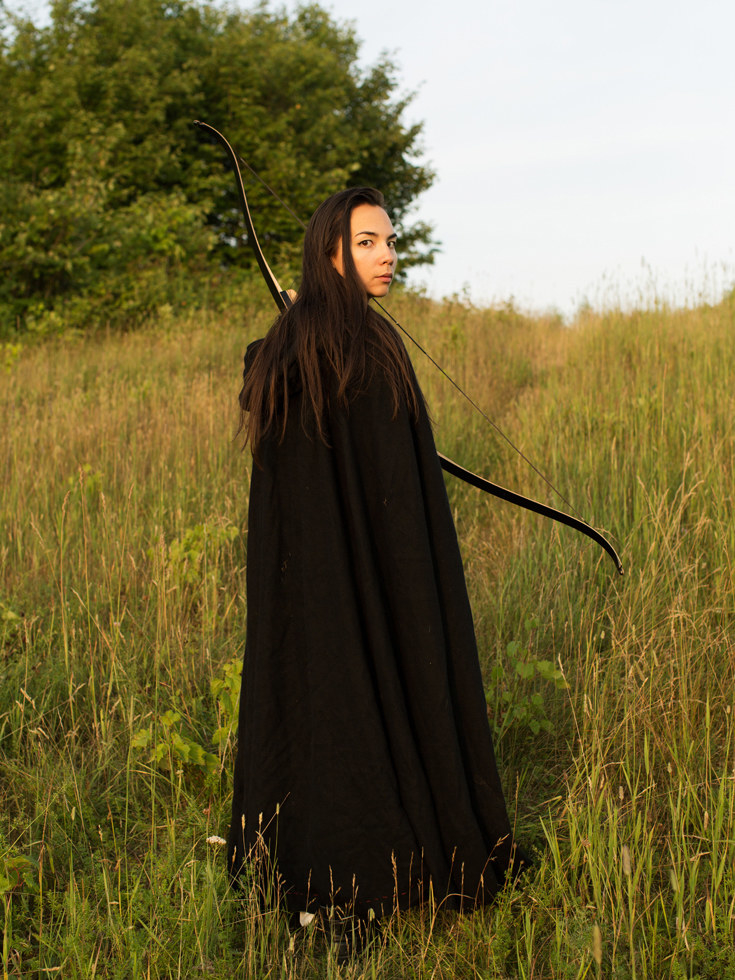
Frankly, I think that if your witchcraft is not political, you are still asleep. We need to wake up from the idea that witchcraft is just an aesthetic, just a superstition, or just about consolidating magical power for personal gain. In a culture as racist and patriarchal and transphobic and homophobic and materialistic as ours is, if you don’t see the way witchcraft is radical and revolutionary, you have some waking up to do. —Leonore Tija
Karen Rose (Brooklyn)
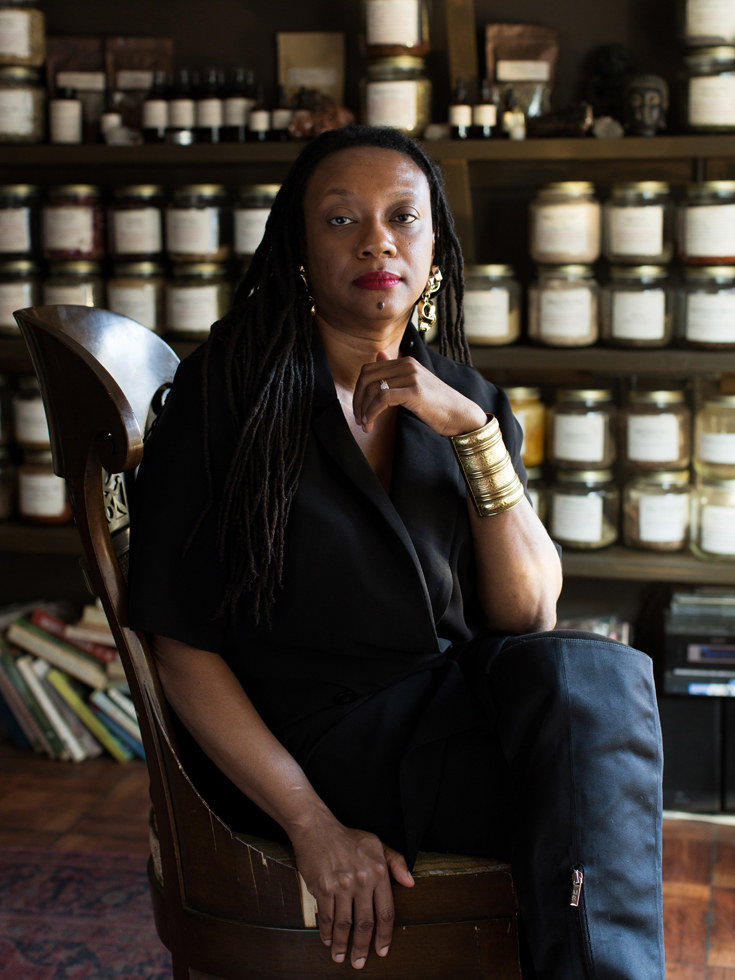
I never considered myself a witch. I consider myself the descendant of healers. The granddaughter of medicine people. My grandfather and my grandmother knew spirit, plants, and how to heal, and they passed this on to me. They never called themselves anything. I realize now that many would call me a witch because of my knowledge of things that are intangible and not always seen. I am cool with it. The witches of Africa are powerful and influence change in great ways. I’m about that.
I work with plants. Plants are energetic beings, just as we are, and their energy matches ours to create healing. Many times they heal more than what we initially thought we were addressing. A plant healer is someone who matches the plant with the person. This can feel like witchery.
Within the community of herbalists and healers, the practices of Indigenous people have been appropriated and capitalized by white people. BIPOC healers and herbalists are often sidelined in popular herbalism culture to the point where our ancestral wisdom is not valued as much as European wisdom, or until it’s packaged and taught by someone who is white. For me, this is the way I have felt unsafe in my identity as a Black woman healer. “Unsafe” to me means silencing the voices of marginalized folks. I have seen that so many times in this work.
Black women have always been healers and we should share our stories and wisdom. —Karen Rose
Phoebe (New Orleans)
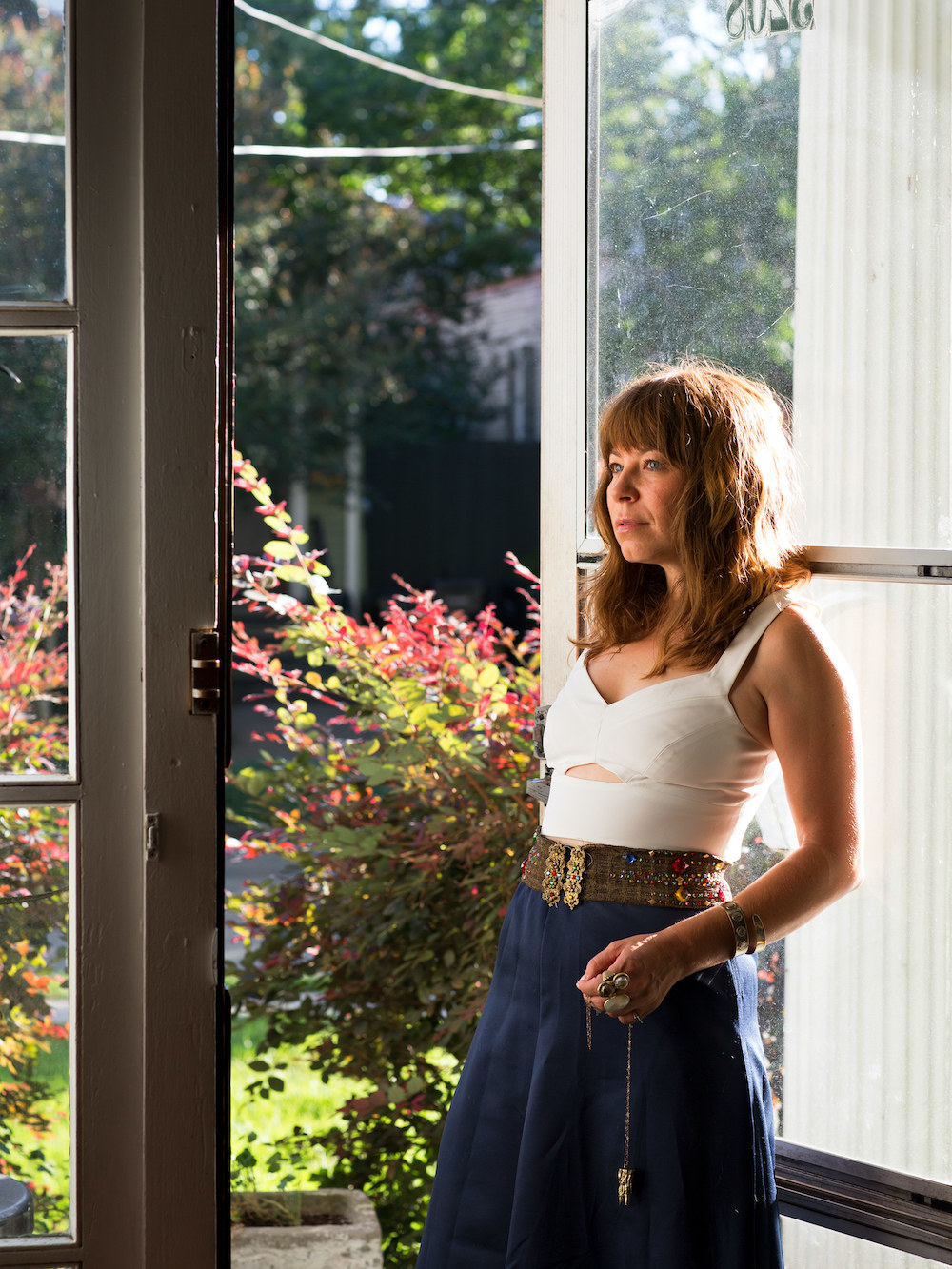
I have never doubted the presence of magic, and I’ve always communicated with the natural world around me, both seen and unseen.
Growing up in rural New Hampshire, the lady’s slipper orchids and garden snakes felt as much my kin as humans did. I spent a lot of time alone and didn’t question the normalcy and validity of speaking to the elements around me. The nuances of nature’s seasonal changes and cycles were in my blood.
In the spring, I planted seeds and drank maple sap straight from the buckets hanging on the trees. Come summer, I would soar above the fields with the hawks, forage for mulberries and wild grapes, and collect yarrow and calendula for the healing salves that my mother would make. Autumn brought the harvest, crunching golden leaves, and preparations for the long nights ahead. Winter was icicles, evergreen boughs, and candlelight, the scent of beeswax and pomander balls.
All year long, I ran through the forests and marched across mountain streams with a band of like-minded wild child spirits. We explored abandoned cabins in the woods and spent hours hiking reservoirs, collecting feathers, stones, and bones. Snakes, frogs, and forest creatures were our familiars. We watched beavers build their dams and fed wild strawberries to turtles. The cosmos arranged and rearranged themselves, aurora borealis streaked across the night sky... The power of the earth, the universe, was undeniable. Why would I not speak directly to all of it, tell it of my sorrows, ask for support and guidance? —Phoebe Autumn
Keavy (Brooklyn)
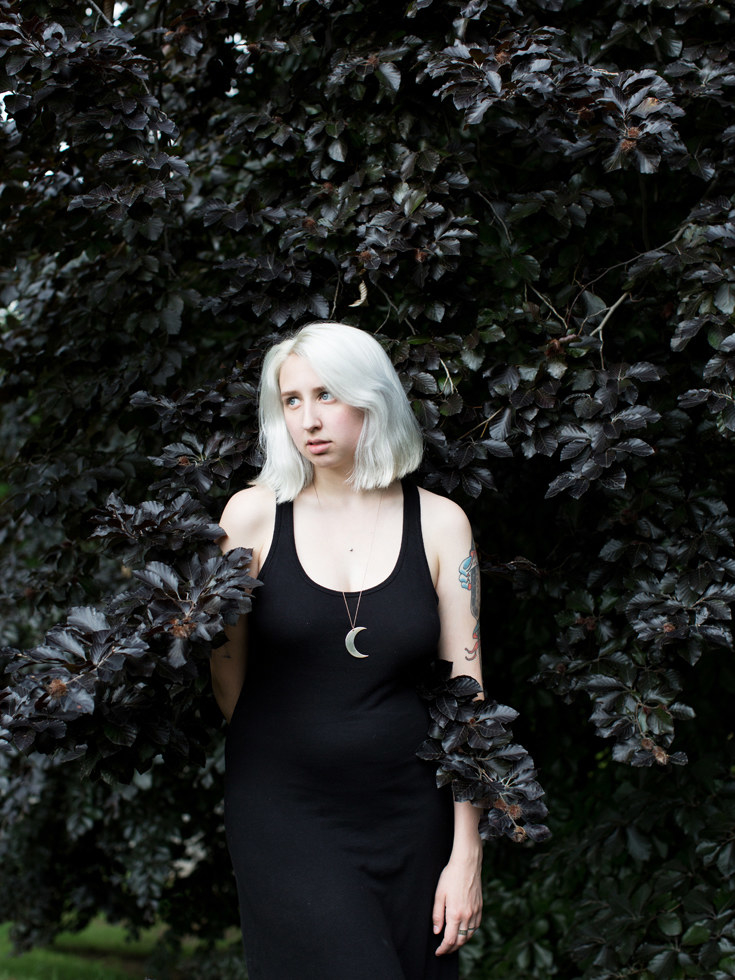
For me, the word “witch” and my genderqueer identity are linked. Both feel like words that describe a facet of my identity that might once have been hidden but now I embrace, and both are identities that fit me more cleanly than any other and that bring me a sense of euphoria and power.
I remember a few years back there was a great deal of controversy over a witch in New Orleans using bones that had washed up from a Black cemetery in their practice. Many (including me) felt it was inappropriate for a white person to use the bones of a marginalized community in their practice, as it reinforces a horrible history of oppression and violence toward Black communities and bodies, particularly in the South. It tied into a larger discussion about cultural appropriation, which is a difficult and complex subject in the witch community. The use of white sage by persons who are not of Indigenous descent has skyrocketed, which has made access to white sage by Indigenous communities more limited, effectively prioritizing white witches over Indigenous peoples who use white sage in their own cultural and religious practices. Personally, these controversies have made me more mindful about what practices I adopt and how I come by them. Are these practices that feel natural to me? Why? Am I colonizing spaces by practicing certain things as a white person? —Keavy Handley-Byrne
Juliet (Jersey City)

I’m from a long line of witches. I’m an Indigenous Taino medicine woman and bruja. I belong to my tribe, Higuayagua Taino.
Anyone that meets me will see what I’m able to see, hear, do. When I was a teen, I didn’t know how to control what would happen around me. Spirits that I’m able to see and communicate with would bother me while I was in school, making things move and telling me things I needed to tell certain people. I was used by teachers and adults for my gifts. I didn’t want to be that person. I wanted it to shut off and for me to be normal.
I tried to commit suicide a couple of times until I realized I wasn’t supposed to go. It wasn’t my time. Who I was, was not changing. I needed to accept my witch and protect myself. So instead I started to use my gifts to help people. And that’s when it started to feel like I could live this way. Now, I’m an author, the owner of a botanica, and an activist for Indigenous rights. —Juliet Diaz
Wilda (Mackworth Island, Maine)
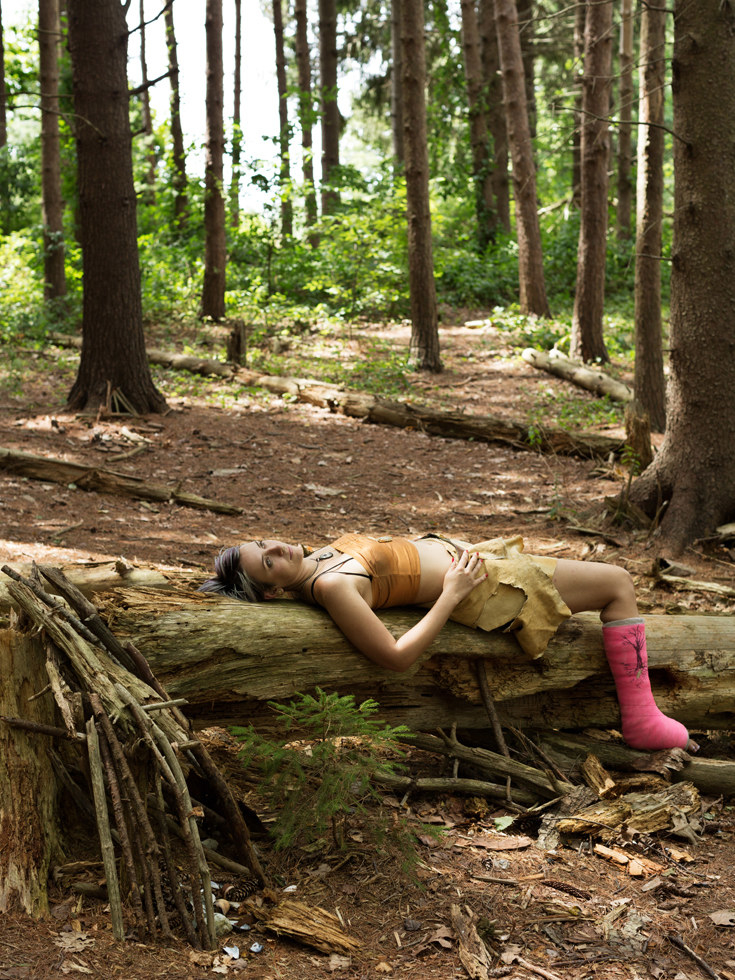
I grew up on a multigenerational farm in central Minnesota. I was surrounded by trees, prairie, gardens, and old buildings filled with artifacts from my family’s past. I spent a lot of time building intimate relationships with the plants and animals around me and paying attention to the elements in a very experiential way. The smell of the pine trees, feeling the energy change with the weather, or interacting with a deer, rabbit, or tadpole gave me a profound sense of interconnection that has deeply shaped my practice. I created my own ceremonies of intention often involving items such as stones, plants, bones, or items from family members. If I found a hurt animal, I would try to heal it. If I found a dead animal, I’d hold a ceremony to send it on its journey. I’d often sneak out late at night to walk and talk to the trees or the stars and planets. I was often alone as a child and I don’t think I ever really thought twice about any of this until I got older and realized that wasn’t everyone’s reality. School was very difficult for me and I generally felt alienated. I was often focused on the things everyone else seemed to be missing.
My personal witchcraft practice is a lot like my cooking. I don’t use recipes — I take what is already present and use it to intentionally create whatever I am needing, working toward, or processing in that moment. I may use my voice, items of significance, my body, my tears, my sex, music; the list goes on. My goals are often different: personal healing, healing for others, exploration, connecting with ancestors or elements. Sometimes I channel different types of energy and there is no conscious goal except to gather information that may be useful or access whatever healing I might need. Sometimes I access something conscious, sometimes primal, sometimes cosmic, sometimes other-dimensional. I often practice in my dream time as well. —Wilda
Serpentessa (Esopus, New York)
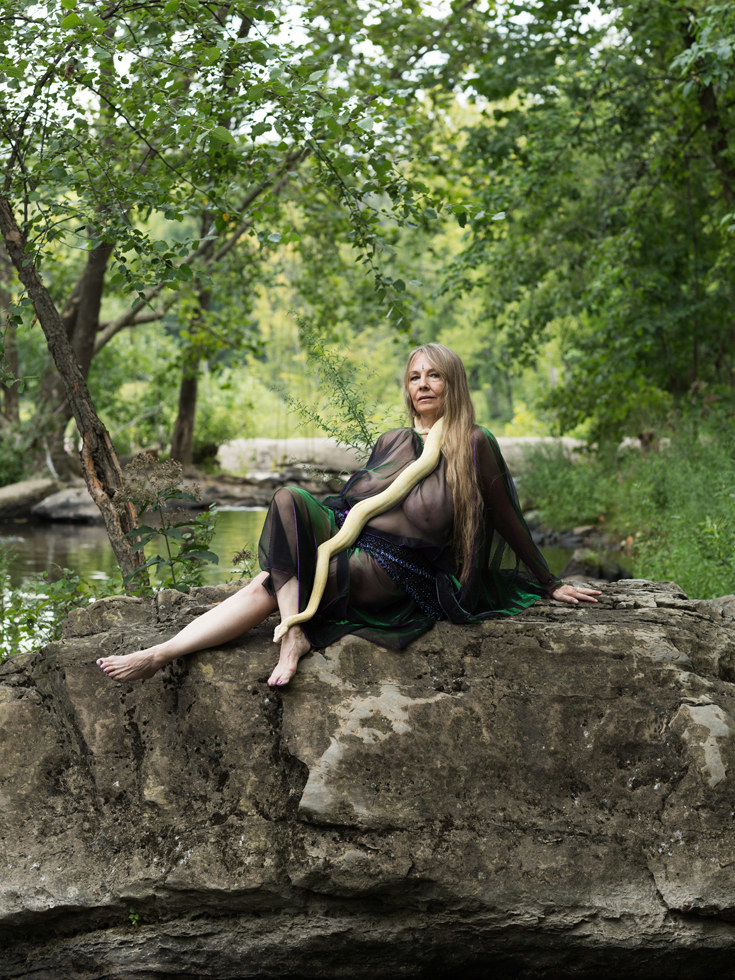
Before my snakes slithered into my life 35 years ago, I had lost touch with my sensual wild nature and life purpose due to physical illness. Yet entwined in my snakes, I experienced a profound healing in my Body-Mind-Soul. Their soothing serpentine undulations all over my body restored my equanimity, my ability to feel joy, sensuality, and well-being amidst my pain and life’s conflicts.
I am a snake priestess or nature witch, one who recognizes the power of awe: respect, fear, and wonder in the presence of something sacred. I collaborate with many who are Wiccan as well as Indigenous, Goddess-oriented, and laypeople.
I define priestess as a verb, as in priestessing or facilitating an experience. Some prefer to see me as an interspecies facilitator with a specialty in boa constrictor snakes. —Serpentessa
Shine (New York)
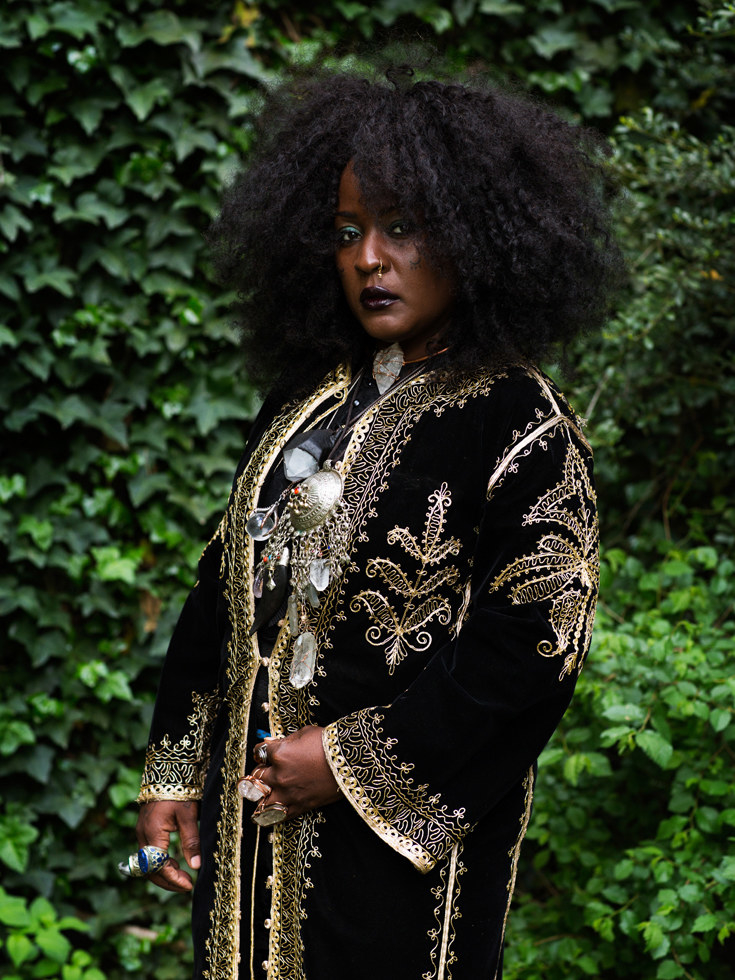
My brand of witchcraft is my own: a wild, eclectic brew of hoodoo (Black Native American folk spirituality) and shamanism. I am a solitary witch and the woods are my church. I pray in nature and use the elements to heighten my rituals and ceremonies. I use tools such as drums, rattles, animal bones, feathers, crystals, and sigils, and I channel animal spirits, spirit guides, and ancestors. I pray with my full body and spirit to enter into trance states. —Shine Blackhawk
Judika (Brooklyn)

As a child in school, I was mocked for my interests in the occult and witchcraft. I learned to become very secretive. Years later, while in an abusive marriage, whenever I gave the slightest indication of leave-taking or standing up for myself, my then-husband would threaten to tell the court I was a witch, telling me that because of this I would lose custody of our children. I took his threats seriously.
Those experiences are specific to me, but there’s also always the greater threat: for much of history, it’s been dangerous to be identified as a witch, whether or not you actually are one, and that’s still true in some parts of the world. I used to be a very intrepid traveler, but now there are places I wouldn’t go for fear of anti-witchcraft laws. Witches are currently comparatively safe in the West but that could always change. —Judika Iles
Marie and Ébun (New York)
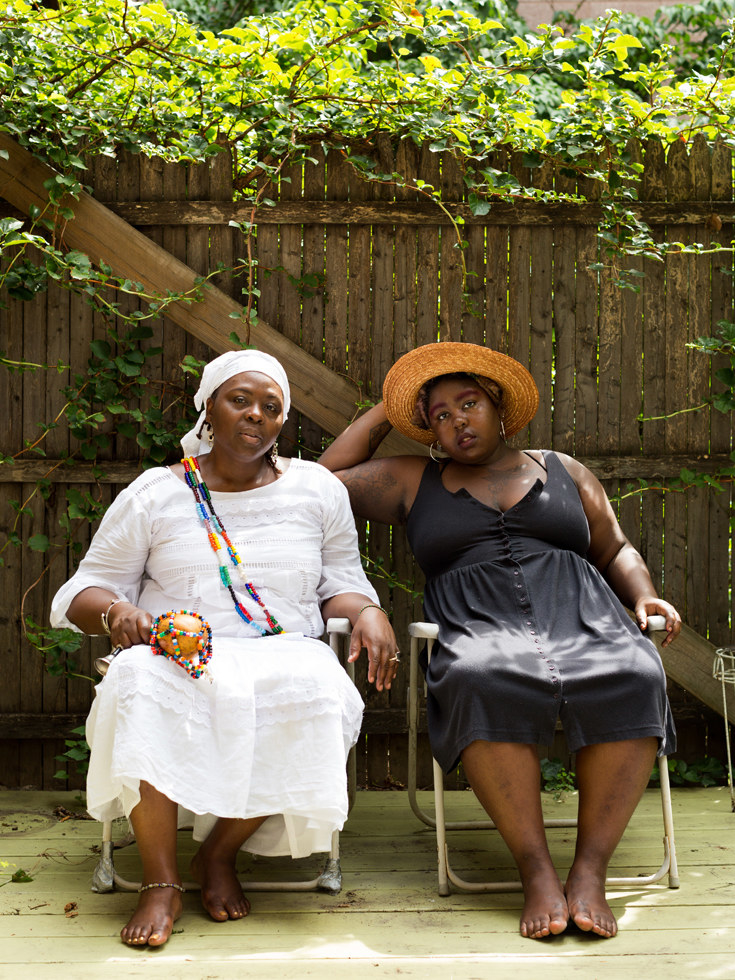
Marie C. Nazon, PhD, LMSW: I belong to a pagan community, Triple Spiral of Dún na Sidhe, where we do full and new moon rituals and follow the Celtic traditions of Samhain, Imbolc, and the Brigid flame. It is a daily practice of connecting with the Goddess through prayer, meditation, and ritual. I am also a Priestess (Mambo) in the Vodou tradition of Haiti. I get more disparaging remarks about that than being self-identified as a witch.
A “witch” is any woman who is grounded in her power, able to manipulate/shift energy for her highest good whether in the boardroom, the bedroom, or the kitchen. Any woman who uses the knowledge of the forces of nature to heal, or consciously manifest, is a witch.
My daughter and I are women of color and voluptuous women active in our communities as healers. My daughter grew up in circles of women who practice all sorts of Indigenous spirituality. Within these spiritual traditions are also what one may call witches, so it is not unique to just the pagans. But it is in that tradition we connect most with the Divine Feminine.
Ébun Zoule (daughter to Marie): I was really into taking online quizzes in middle school. I remember taking a quiz about what kind of hippie I was and the result I received was “neo-pagan.” I was thrilled with that answer because I felt like I was special, that the kind of hippie that I was had more spiritual connections to the earth and the universe. It felt revelatory to me. “I am Neo-Pagan. Hear me roar!” Little did I realize that my whole existence was filled to the brim with witchy rituals and practices — I just never put the word to those experiences. Growing up, witches were always depicted as white women. Therefore, how could someone like me, a Black girl, be a witch?
Taking that quiz was pivotal. But the spiritual experiences that my mother specifically provided for me wholly transformed the way that I engaged with myself and my personal power and the rest of the world. I was shown through my mother’s spiritual communities that women (all kinds of women — lesbians, trans women, teachers, priestesses, water-pourers, fire-keepers, activists, Indigenous women, Black and Latina women) have the power to make change for themselves and the world. Now whether that was through praying in a sweat lodge, dancing naked around a fire with other women, or calling on the ancestors for a grieving ceremony, I made subconscious notes about the kind of person I wanted to be in this world. The title “witch” will never not be part of who I am and my legacy. It’s so powerful.
“Witch” is totally political for me. It is a political practice in that it allows folks to manifest things for themselves and their communities rather than relying on a capitalist system. Solutions are found through community and self-spiritual guidance instead of capitalism and all of the ways it drains people of their power. I think capitalism is afraid of the word “witch” because it implies self-sufficiency. How could capitalism work if everyone was self-sufficient? ●
Major Arcana: Portraits of Witches in America (Andrews McMeel Publishing) is out Nov. 10.
